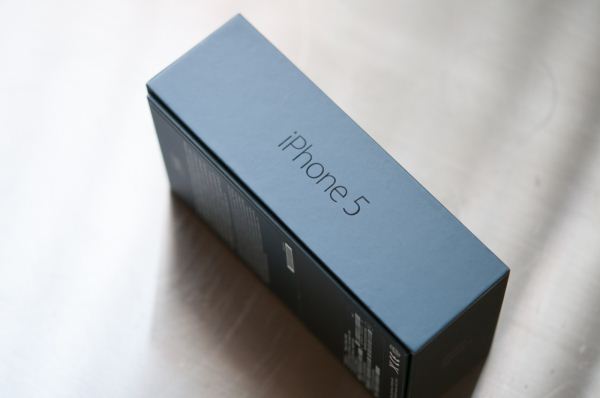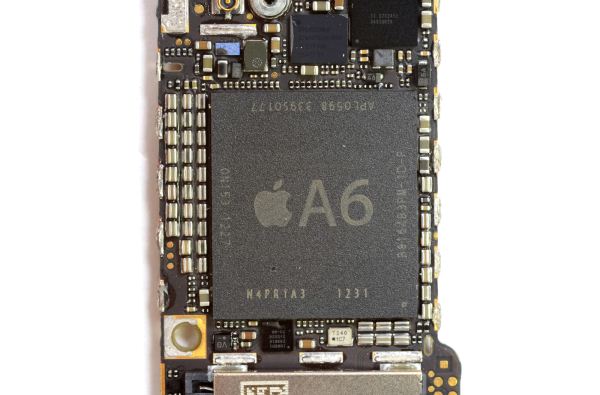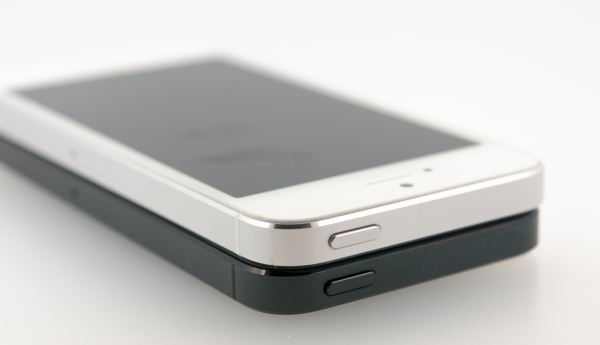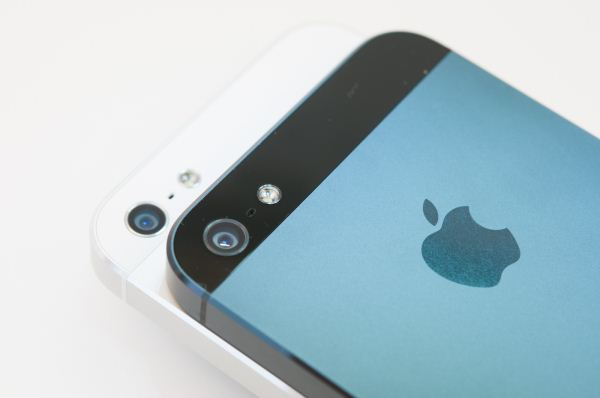The iPhone 5 Review
by Anand Lal Shimpi, Brian Klug & Vivek Gowri on October 16, 2012 11:33 AM EST- Posted in
- Smartphones
- Apple
- Mobile
- iPhone 5
Final Words
With a device vendor that also happens to moonlight as an SoC vendor and software developer we really need three parts to this conclusion. I’ll begin with the silicon, as that’s ultimately what enables the overall experience.
A6 SoC Conclusions
With the iPhone 4S Apple made a conscious decision to shift its annual smartphone release to the latter half of the year. At the same time, Qualcomm’s 28nm schedule put its new SoCs in phones at the earlier part of the year. All indications point to the first Cortex A15 based designs showing up similarly in the first half of 2013. All of this conspires to set the market up for some very interesting leap frogging. Without a major delay that impacts either Apple or its Android competitors, it looks like in the Spring we’ll see Android devices leapfrogging the iPhone and Apple responding in kind in the fall. The staggered release cadence won’t continue forever, but at least for the next generation it appears that will be how it plays out.
I don’t know which refresh cycle makes the most sense (new architectures earlier in the year vs. later) from a business standpoint. I suspect there’s something to be said about hitting the holiday buying season but I’m not much of a financial analyst.
Apple’s decision to introduce a custom ARM core in the A6 SoC is very unique. I would normally have expected Apple to go for a Cortex A15 based design in the next round however I’m no longer sure. Investing in your own CPU design isn’t usually something you do once and then just drop the next generation. I would assume Apple has plans to continue to evolve this architecture in a very power focused way. We’ve mentioned time and time again that ARM’s Cortex A15 was first conceived as an architecture for more power hungry systems (servers and other PC competitors). The Cortex A15 moved down the totem pole and will likely rely on smaller cores to keep power consumption in check when running lighter workloads. It wouldn’t be a stretch to envision a slightly larger (~20%?) Swift core next generation built at Samsung or TSMC, adding some architectural features to drive performance up.
Swift appears to offer better power/performance efficiency than any other currently available ARM architecture. Its architecture, performance and power profile most closely resemble Qualcomm’s 28nm Krait/Snapdragon S4, although through hardware or software optimizations it appears to be able to come out slightly ahead. Apple complicates the gains in performance by increasing clock speed dramatically over the iPhone 4S, which makes the architecture look more revolutionary than evolutionary in nature. A good part of the 2x increase in CPU performance compared to the iPhone 4S boils down to clock speed, however there are significant improvements to the memory subsystem that really help things. ARM’s Cortex A15 will likely pull ahead of Swift in CPU performance, although it remains to be seen how it will compare in power and what Apple will respond with in late 2013.
Intel’s Atom core remains very competitive with the best of the ARM world. A single core Atom still ends up being the only CPU that can regularly outperform Apple’s Swift, however it does so while seemingly consuming more power. Whether the performance advantage can make up for the peak power deficit remains to be seen as we lack a good, high-end Atom based LTE smartphone to really test that theory against.
On the GPU side Apple continues to be at the forefront of innovation, however Qualcomm appears to have learned quickly as the Adreno 320 manages to give the PowerVR SGX 543MP3 a run for its money. I suspect next year we’ll see similarly competitive performance from Intel and NVIDIA as well (finally!). Having an aggressive player in the silicon space always makes for good competition once everyone adjusts their release cadence.
Overall the silicon story in the iPhone 5 is a very good one. Performance increases by the biggest margin since the move from the iPhone 3G to 3GS. If you are the type of user who can appreciate improved response time, the iPhone 5 definitely delivers.
The market is becoming increasingly competitive however. Just as Google responded aggressively to close the UI performance gap between Android and iOS, the SoC vendors appear to be doing the same with their silicon. Going forward it is going to become more difficult to maintain significant performance advantages similar to those Apple has enjoyed in previous generations. It’s really going to boil down to software and ecosystem in the not too distant future.
iPhone 5 Device Conclusions
As a device, the iPhone 5 is a solid evolution of its predecessors. The larger 4-inch screen doesn’t fundamentally change the device, but it definitely modernizes it. Going back to the old 3:2 aspect ratio iPhones feels extremely claustrophobic now. After using the iPhone 5 for weeks, picking up an older iPhone feels a lot like switching between the iPhone 4 and iPhone 3G did.
The new device feels appreciably thinner and lighter, although a tradeoff is the delicate feel of the anodized aluminum on the 5. Although you’d normally assume moving away from glass would make the device feel more rugged, the fear of scratching the very thin anodized coating quickly supplants any relief you might have had. The iPhone 5 lacks the heft that gave the 4/4S that jewel-like feel, but it does so without feeling overly cheap and ends up being an improvement in overall portability. Design is subjective, but I do believe that Apple has managed to move forward in this regard as well.
The iPhone 5 marks Apple’s first integration of LTE into a smartphone, and the process went relatively smoothly. Handovers between 3G and LTE are relatively seamless, although we did notice the occasional dropped hotspot connection when calls came in while we were tethered over WiFi and on LTE. For those of you who haven't yet enjoyed the world of LTE on a smartphone, LTE support delivers one of the bigger performance improvements you’ll see with the iPhone 5.
At a high level, the iPhone 5’s cameras appeared to be some of the least unchanged elements of the new device however in practice the improvements are significant. The front facing camera now delivers much higher quality photos and the rear facing camera's low light performance is a major step forward compared to the iPhone 4S. Given the amount of smartphone photography that happens in poorly lit conditions, I suspect the improvements Apple made to the 5's rear facing camera will be quite noticeable in regular use.
Although the bulk of the discussion on display had to do with its taller aspect ratio and mildly increased resolution, it's really the move to in-cell touch (reducing reflections/glare) and the increase in quality that are most revolutionary here. The iPhone 5's display now offers full sRGB coverage and much better accuracy than its predecessor. Although a subtle improvement in day to day use, it's good to see Apple continuing to push the envelope here.
Battery life, as we mentioned earlier, is really a mixed bag. Depending on your workload you'll either see improved battery life due to the faster platform and a quick rush to sleep or you'll see a regression if you put the new silicon to heavier use as a result of its speed. The days of relatively static battery life progressions are behind us at this point, welcome to the world of increased dynamic range of power consumption. It's a tradeoff that has to be made in pursuit of ever increasing performance unfortunately. Apple seems to maintain good idle power characteristics in light of everything.
The big question is of course whether or not you should upgrade to the iPhone 5. The move to LTE alone is a big enough reason to upgrade for any heavy user of mobile data. The larger/improved display, much faster SoC and 5GHz WiFi support are all icing on the cake - and this is one well iced cake. If you have a subsidized upgrade available via your carrier, I'd say the upgrade is a no brainer. If however you've got to pay full price you have to take into consideration what's coming on the horizon. A faster version will likely hit in late 2013, and we'll potentially see a move to 20nm silicon in late 2014 (paving the way for an improvement in power profile). If you're on a 2 year upgrade cycle, buying the 5 now and upgrading again in 2014 wouldn't be a bad idea.
iOS 6 Conclusions
Finally, we have to conclude our look at the iPhone 5 with a discussion of its operating system. As I’ve mentioned in articles/videos past, Apple and Microsoft find themselves in somewhat similar positions when it comes to the role their smartphones play in the market. Both companies run quite profitable businesses selling Macs and PCs respectively, and as a result their smartphones can act as companion devices rather than primary computing devices. Unless there’s a dramatic change in Chrome OS, Google has to rely on Android smartphones and tablets to get their share of computing dollars (and search results). Apple and Microsoft differ a bit when it comes to tablets as Apple uses the iPad to compete with low-cost PCs.
I believe understanding the motives helps explain the software decisions that are made. As the iPad has to serve as a cheap PC alternative, iOS ends up inheriting some productivity focused enhancements - just not as many as a full blown OS would.
As it applies to the iPhone, iOS serves as a companion platform, a true pocket digital assistant. Its goal is to be an appliance, not a full blown computing device, and as such it looks and feels very different than Android.
With the latest update to iOS, Apple continues to evolve the platform. Similar to the iterative improvement in iPhone hardware, Apple’s yearly iOS cadence is largely responsible for its solid footing in the market. Although a clear regression in iOS Maps quality plagued this latest update, the platform is still a good one for those who it resonates with.
iOS remains very appliance-like in its behavior. Despite the added complexity that iOS has inherited over the years, Apple has been able to retain much of the simplicity that drew users to the platform in the early days. The iPhone/iOS platform is unique in that, unlike OS X, it started as a mainstream platform rather than a computing platform that had to try and become more consumer friendly over time.
If you’re after something fundamentally different, you’ll have to look elsewhere as I don’t believe iOS is destined for a dramatic departure from the current model anytime soon. Thankfully there are good alternatives from both Google and Microsoft if iOS isn’t what you’re looking for. Pressure from Apple on both the hardware and software side will help ensure that those platforms continue to progress as well - competition is alive and well in the mobile industry, that’s for sure.
For existing iOS fans and/or iPhone users, the latest iteration of iOS on the iPhone 5 (perhaps with the exception of Maps) does nothing to alienate you. Apple has done a good job of dutifully maintaining the platform and remaining true to its roots. As a significant source of Apple’s revenue, you would expect no less.















276 Comments
View All Comments
Sufo - Tuesday, October 16, 2012 - link
Agreed. If his goal is to fly the flag for apple (who clearly need no flag flying - look at their stock prices, but i digress...), and discredit its detractors, he's doing an awful job. But then again, I do detect a whiff of troll.Spunjji - Friday, October 19, 2012 - link
Word.doobydoo - Saturday, October 20, 2012 - link
Bragging? About being an engineer?LOL
dagamer34 - Tuesday, October 16, 2012 - link
If you wanted a "should I upgrade to this phone" review, there are hundreds of those reviews online. But AnandTech is pretty much the only place where you get a definitive review worth reading 5 years from now. They leave no stone unturned.Arbee - Tuesday, October 16, 2012 - link
Agreed. "Should I upgrade" is covered by literally dozens of newspapers, TV shows, and websites (Engadget, The Verge, Gizmodo, All Things D just to name 4). AT is the home of the 15+ page deep dive, and they do it just as well for Androids and Windows Phones.Also, I'm completely positive that if you sent Brian a GS3 with the iPhone 5's camera he'd write about it in exactly the same way. 2 weeks ago DPReview covered the iPhone 5's camera in a very similar way (including the same suggestions on how to avoid the problem, and a demonstration of inducing similar artifacts on the iPhone 4S and a couple of Android handsets). Optics is not a soft science, there is no room for fanboyism.
rarson - Wednesday, October 17, 2012 - link
I totally disagree. He brings up a completely valid point because Anandtech usually separates the reviews from the in-depth tech examinations. There's absolutely no need for the review to be 20 pages when most people are looking for benchmarks and hands-on impressions. Considering the fact that going this in-depth made the review late, it makes no sense at all.At least half of this information in this article doesn't even fall under the category of a review.
darkcrayon - Tuesday, October 16, 2012 - link
I think this type of review (hell, the site in general) is directed at people that want the maximum amount of compiled nitty gritty techy details... Notice his review was weeks after the larger more general consumer oriented sites. I think anyone wanting to know whether they should upgrade, that isn't interested in the technical details of the A6, would be better served reading those reviews anyway.Anand has said in previous reviews that he felt that iOS was intended to be more of an "appliance" OS. It's a pretty apt comparison of the two actually. That focus is why you can side load and more easily put custom software on Android, and also why you'll need anti-malware software for it before long as well. The point of an appliance is to have a reliable, consistent device that you spend more time using than tweaking.
daar - Wednesday, October 17, 2012 - link
Point taken, darkcrayon.I prefer AT's reviews because they do a thorough and unbiased job at detailing/benchmarking and comparing different products. The suggestion was that the info about the SoC be split on it's own. If Intel released a new chip, call it i9, and the first sample was from an Alienware notebook, I would simply be suggesting that the technical info about the chip have it's own post and not be combined with the review of the notebook is all.
I find it a bit strange that people are suggesting to go to other websites when I made the comment of comparisons to other products, and quite unlike most posts in AT reviews. If I make a comment about a few ATI features not being compared with Nvidia's, I would have been surprised to have people to tell me to go visit Tom's Hardware or the like.
Not to say there wasn't any comparisons, but rather in contrast to say, for example, the One X review where Brian made the comment of how the construction of the device felt better than the GS3. It felt like punches were being pulled in this review is all.
phillyry - Sunday, October 21, 2012 - link
Anand,I would like to know, however, how an Android device serves more as an all purpose device than an iPhone.
Did you mean because of its customisable skins or because it can do some things that an iPhone cannot - presumably because of Apple's strong hold ('death grip') on the OS?
This is pretty important to me because I am near the end of the term of my agreement and am in the market for a new 'phone'. I've considered W8P for precisely this reason but am waiting to see if they flop or not. I've always thought of Android as pretty darn similar to iOS but with slightly different interfaces and less user restrictions.
Is there some other factor that makes an Android any more like a pocket computer, like the future x86 W8P phones will presumably eventually be, and less like an iPhone than I have imagined?
phillyry - Sunday, October 21, 2012 - link
I also took notice of it when Anand referred to the iPhone as an appliance. Your remark saying, "The point of an appliance is to have a reliable, consistent device that you spend more time using than tweaking" would be comforting but I don't think that that's quite how Anand meant it. I was actually quite put off by the term because I think that he meant that the iPhone is made to be more of a tag along device that goes with your other Macs and plays a support role rather than a stand alone device. He pretty much says as much.Like I said, I found this a bit off putting but I think he's just saying how he sees it in terms of the respective companies' product lines and agendas. It actually makes a fair bit of sense. I found that when I got an iPhone it made me want an iPad. And then when I got an iPad it made me want a MacBook. Call it what you will but I remember thinking that they should be able to make it so that I can do everything I need to on an iPad but distinctly felt like I really needed a MacBook to really do all that I wanted. It could be argued, along the lines of Anand's original comment, that this is Apple's approach / business model.
It also points to a distinction between Apple and the other big player that no one in this forum is talking about - Microsoft. Windows 8 appears to be meant to be the exact opposite of this approach. Instead of one device for each purpose it's one device for all purposes. It will be interesting to see if Microsoft's approach with Windows 8 will turn things around or simply flop, at least on the handheld device side of things.